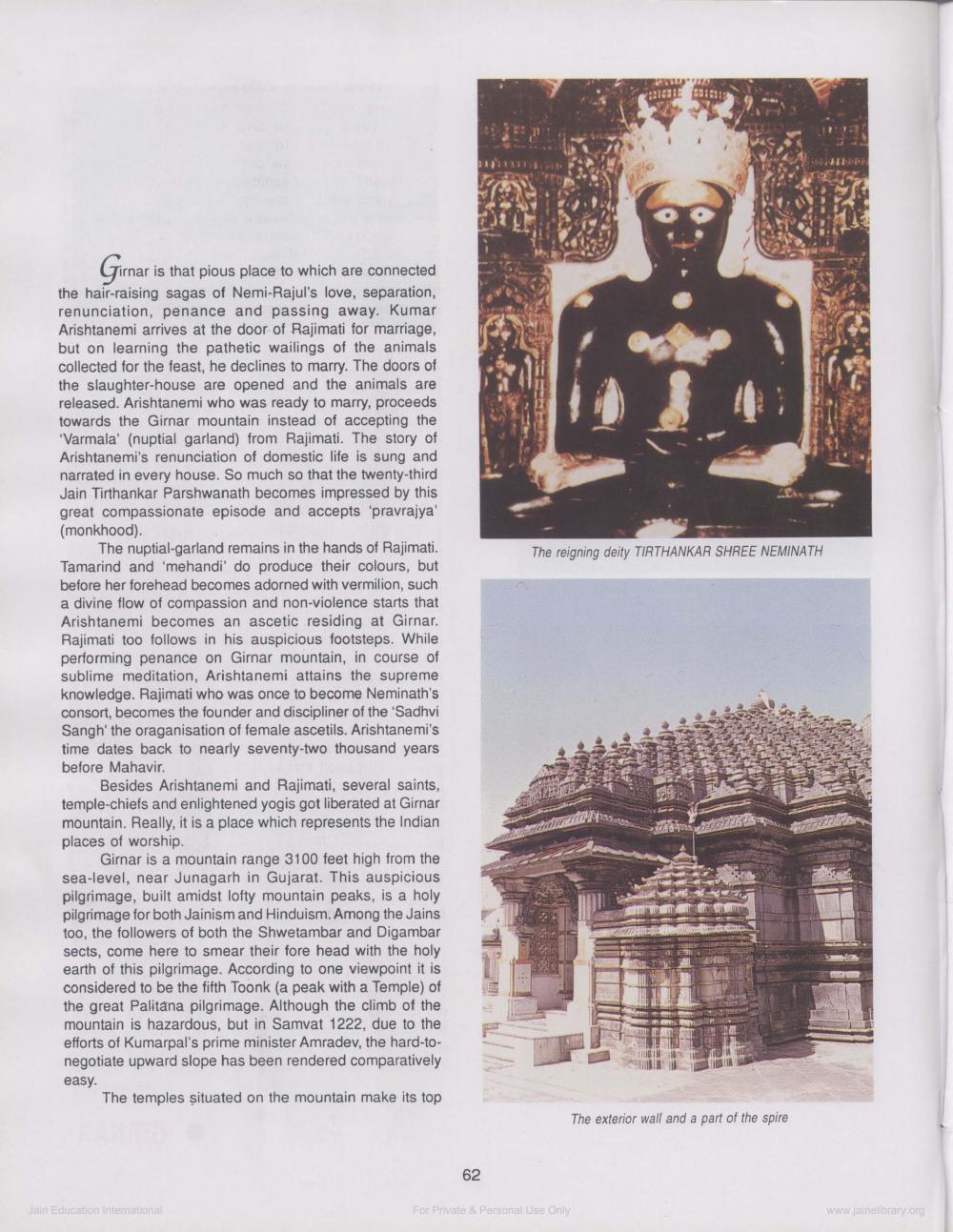________________
EDISI
The reigning deity TIRTHANKAR SHREE NEMINATH
Girnar is that pious place to which are connected the hair-raising sagas of Nemi-Rajul's love, separation, renunciation, penance and passing away. Kumar Arishtanemi arrives at the door of Rajimati for marriage, but on learning the pathetic wailings of the animals collected for the feast, he declines to marry. The doors of the slaughter-house are opened and the animals are released. Arishtanemi who was ready to marry, proceeds towards the Girnar mountain instead of accepting the "Varmala' (nuptial garland) from Rajimati. The story of Arishtanemi's renunciation of domestic life is sung and narrated in every house. So much so that the twenty-third Jain Tirthankar Parshwanath becomes impressed by this great compassionate episode and accepts 'pravrajya' (monkhood).
The nuptial-garland remains in the hands of Rajimati. Tamarind and 'mehandi' do produce their colours, but before her forehead becomes adorned with vermilion, such a divine flow of compassion and non-violence starts that Arishtanemi becomes an ascetic residing at Girnar. Rajimati too follows in his auspicious footsteps. While performing penance on Girnar mountain, in course of sublime meditation, Arishtanemi attains the supreme knowledge. Rajimati who was once to become Neminath's consort, becomes the founder and discipliner of the 'Sadhvi Sangh' the oraganisation of female ascetils. Arishtanemi's time dates back to nearly seventy-two thousand years before Mahavir.
Besides Arishtanemi and Rajimati, several saints, temple-chiefs and enlightened yogis got liberated at Girnar mountain. Really, it is a place which represents the Indian places of Worship.
Girnar is a mountain range 3100 feet high from the sea-level, near Junagarh in Gujarat. This auspicious pilgrimage, built amidst lofty mountain peaks, is a holy pilgrimage for both Jainism and Hinduism. Among the Jains too, the followers of both the Shwetambar and Digambar sects, come here to smear their fore head with the holy earth of this pilgrimage. According to one viewpoint it is considered to be the fifth Toonk (a peak with a Temple) of the great Palitana pilgrimage. Although the climb of the mountain is hazardous, but in Samvat 1222, due to the efforts of Kumarpal's prime minister Amradev, the hard-tonegotiate upward slope has been rendered comparatively easy.
The temples situated on the mountain make its top
The exterior wall and a part of the spire
62
Iain
E
lan International
For Private & Personal Use Only
www.janabat om




